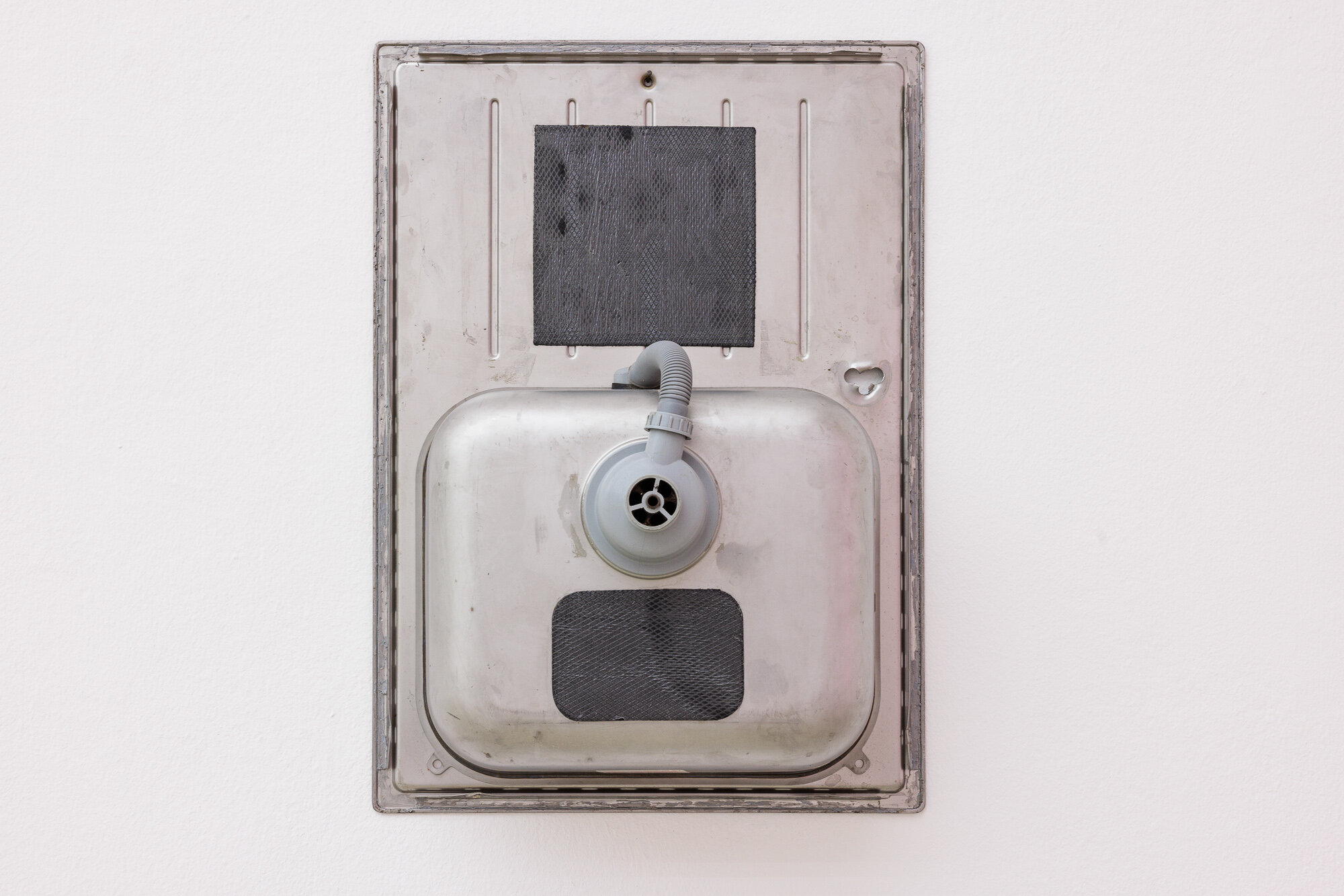sink, 2022

The work sink (2022) consists of a found object — namely the sink that also provides the title for this exhibition. It very concretely names the shown object, butas it is written in lower case it can also be seen as a verb with meanings such as the movement of sinking and also to “sink in” in the sense of something slowly taking effect, as well as having proximity when spoken out loud to the word “think.” These and further points of connection make the title of the exhibition very open,showing how flexibly and playfully language and objects are related to each other here. Unlike most of the other readymades in the exhibition, the sink is not anew industrial product. It shows signs of use and is thus a unique found item in this context, presented to viewers bottom up. Alongside the plastic syphon and the hole where the tap once was, two black sealing mats are stuck onto this sink — a rectangle with rounded corners and a square one. In spite of the low quality of these plumbing sealing materials, and their status as part of a found item, within the context of this presentation these small black objects allude to the history of art, in particular the early abstract and constructivist painting of Kazimir Malevich. Placing this found item into the institution of the museum leads to a system ofreferences for beholders that is above all focused on our perception of art and that we cannot easily evade.
sink, 2022
Sink with traces of use and glued sealing mat
70 × 50 × 30 cm
Courtesy Galerie nächst St. Stephan Rosemarie Schwarzwälder, Vienna
Heinrich Dunst
Among many others we allow us to highlight following shows: nächst St. Stephan Rosemarie Schwarzwälder, Vienna (2019, 2013), House of Art, České Budějovice (2018), KOW, Berlin (2016, 2014), Kunstverein Schwaz (2015), Ludwig Forum, Aachen (2015), Kunsthalle Wien, Vienna (2014) and Secession, Vienna (2014).